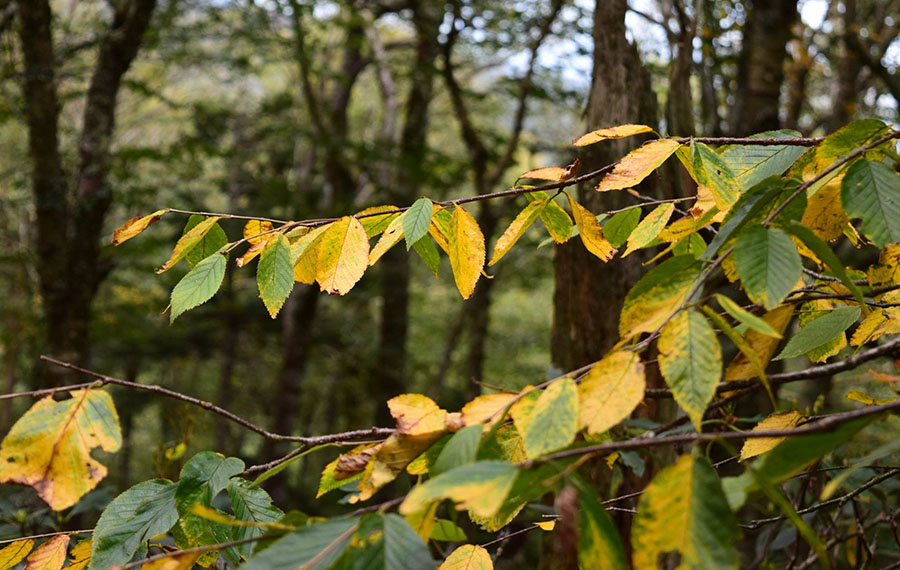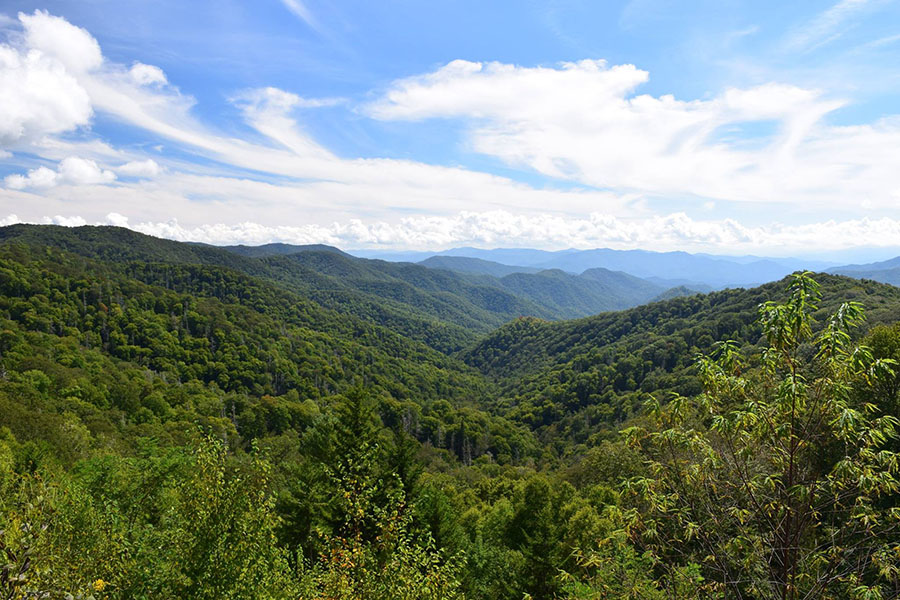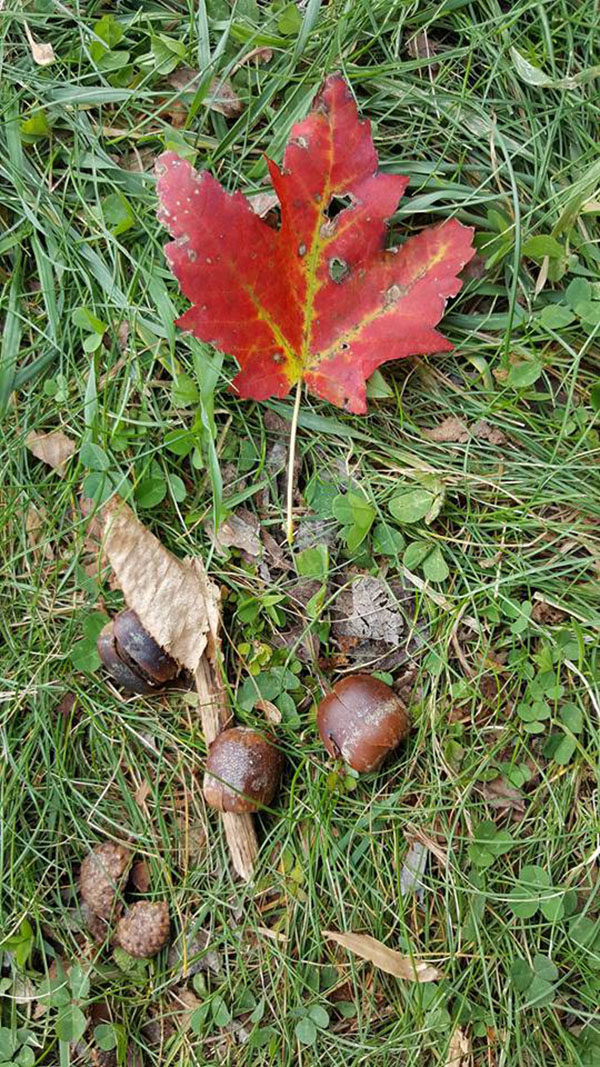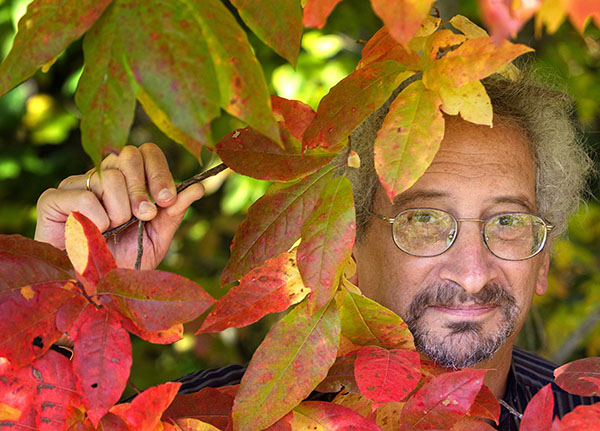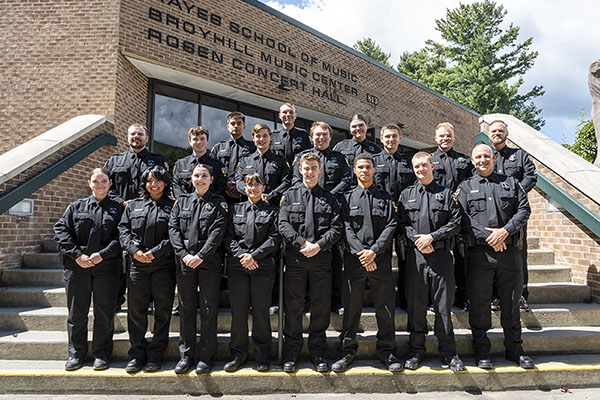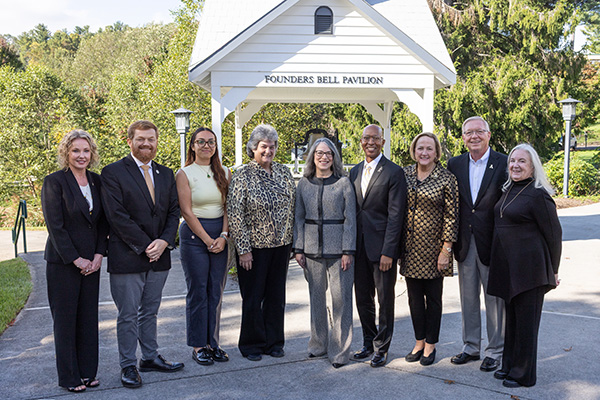BOONE, N.C. — Biologist Dr. Howard Neufeld, Appalachian State University’s “Fall Color Guy,” says this year’s fall leaf color development is behind normal schedule due to warm weather, which is forecast to continue this week.
In analyzing the region’s temperatures, Neufeld has found the nighttime temperatures in the mountains of Western North Carolina are averaging 9 F above normal — the warmest September on record.
“This means that the current fall weather is unprecedented for as far back as weather measurements have been made. That being said, it also means that the responses of the trees to this unusual weather are also unprecedented, since they have never experienced this before,” said Neufeld, who teaches in Appalachian’s Department of Biology.
He was recently interviewed live on the Weather Channel about his analyses and predictions.
RELATED: See the sharp contrast between 2014 and 2018 October color.
This past weekend, Neufeld visited Great Smoky Mountains National Park and drove home along the Blue Ridge Parkway — and the dominant color remains green, he said.
“Usually by this time of the year, the upper elevations above 5,000 feet have significant color,” he wrote in this week’s Fall Color Report posted on the Department of Biology website.
If these high temperatures persist much further into the fall color season, Neufeld said not only will colors be delayed, but they might be far reduced in quality.
“Some trees, like red maples and tulip poplars, may simply drop their leaves before they develop significant color, resulting in a fall color display somewhat like last year, which also had above normal fall temperatures,” he said.
In 2017, the “wild and mild weather upset the traditional coloring,” Neufeld wrote in last fall’s summary. When colors did develop, they were dominated by oranges and yellows, he said.
About the Department of Biology
The Department of Biology is a community of teacher-scholars, with faculty representing the full breadth of biological specializations — from molecular genetics to landscape/ecosystem ecology. The department seeks to produce graduates with sound scientific knowledge, the skills to create new knowledge, and the excitement and appreciation of scientific discovery. Learn more at https://biology.appstate.edu.
About the College of Arts and Sciences
The College of Arts and Sciences (CAS) at Appalachian State University is home to 17 academic departments, two centers and one residential college. These units span the humanities and the social, mathematical and natural sciences. CAS aims to develop a distinctive identity built upon our university's strengths, traditions and locations. The college’s values lie not only in service to the university and local community, but through inspiring, training, educating and sustaining the development of its students as global citizens. More than 6,800 student majors are enrolled in the college. As the college is also largely responsible for implementing App State’s general education curriculum, it is heavily involved in the education of all students at the university, including those pursuing majors in other colleges. Learn more at https://cas.appstate.edu.
About Appalachian State University
As a premier public institution, Appalachian State University prepares students to lead purposeful lives. App State is one of 17 campuses in the University of North Carolina System, with a national reputation for innovative teaching and opening access to a high-quality, cost-effective education. The university enrolls more than 21,000 students, has a low student-to-faculty ratio and offers more than 150 undergraduate and 80 graduate majors at its Boone and Hickory campuses and through App State Online. Learn more at https://www.appstate.edu.
What do you think?
Share your feedback on this story.
